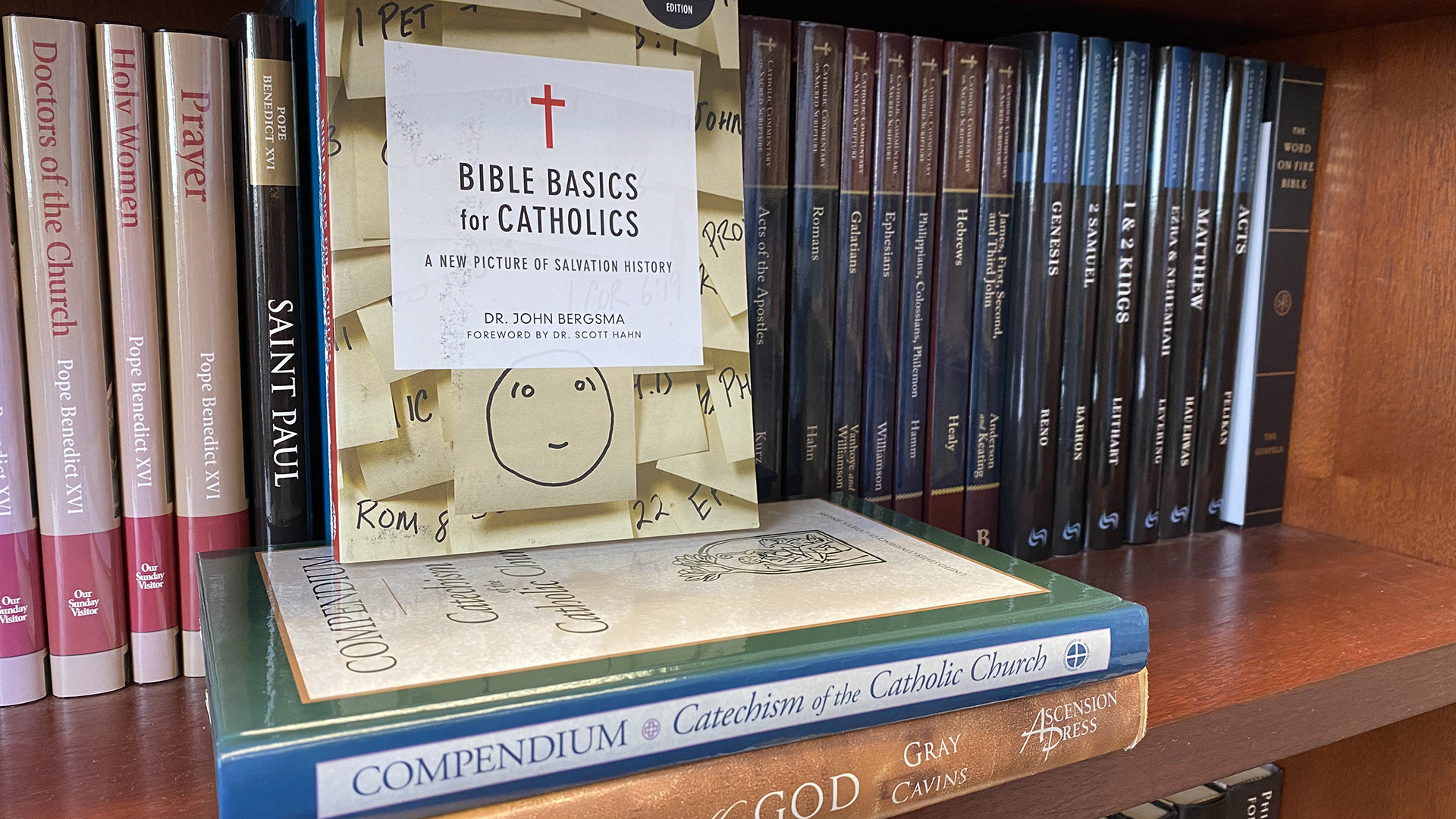
Question:
Your columns have prompted me to want to study the Church’s teaching more, but I’m at a bit of a loss on where to start. Can you give some advice or recommendations?
Answer:
What a great question, especially at the beginning of a New Year! Many people make resolutions at the beginning of January, so it seems fitting to think about how we can each grow in our understanding of the faith.
For those who are dipping their toe into the study of our faith, I generally encourage focusing on two areas to begin: the Bible and the Church’s official teachings. Let me explain why, and then give some recommendations for specific resources.
I highly encourage people to familiarize themselves with the Bible because it is the literal Word of God, and because everything we believe as Catholics is found at least implicitly in the Bible. Especially since the worldwide gathering of bishops together with the pope at the Second Vatican Council in the early 1960s, the Church has been encouraging all Catholics to read the Bible. Consider these words from the Council:
“The sacred synod also earnestly and especially urges all the Christian faithful, especially Religious, to learn by frequent reading of the divine Scriptures the ‘excellent knowledge of Jesus Christ’ (Phil. 3:8). ‘For ignorance of the Scriptures is ignorance of Christ’ (St Jerome)” (Constitution on Divine Revelation, 25).
The quote from St. Jerome has been quoted often: if we want to grow in knowledge of and relationship with Jesus, we must familiarize ourselves with the Bible.
The challenge, of course, is that though certain portions of the Bible are fairly straightforward and easy to understand, others are far more difficult to understand. Hence the value of good resources to help us make sense of Scripture.
To that end, I highly recommend first learning about the “big picture” of Scripture. Among the many books of the Bible, there is a single “story of salvation” that is being told, and coming to understand the basics of that story allows us then to make sense of the many details which the Bible also provides around that story.
Therefore, for those just starting out on their journey into the Bible, I highly recommend John Bergsma’s book, “Bible Basics for Catholics.” The book lives up to its title: it’s the basics of the Bible, written for Catholics. In a very engaging and lively way, Bergsma introduces the reader to that big picture of the Bible.
A second stop on the journey into the Bible could be Jeff Cavins’ “Great Adventure Bible Study,” which provides a bit more depth. Many Catholics have done this study via the video series that Ascension Press publishes (“The Great Adventure Bible Timeline”), but there’s also a book version for those who are more inclined to read, “Walking with God” by Jeff Cavins and Tim Gray.
Finally, I’d recommend a good study Bible, and for the average Catholic, my easy recommendation is the Ignatius Catholic Study Bible. The only bad news is this study Bible isn’t yet complete; there is a New Testament edition, and while much of the Old Testament commentary is available, not all of it is yet. Nonetheless, it remains my favorite study Bible.
The second area I encourage people to focus on when they begin their study of the Catholic faith is the official teachings of the Church. There are many, many theologians writing excellent books on the faith, but it’s important to begin one’s journey by understanding what the Church actually teaches, which is distinct from any given scholar’s explanation of those teachings. That’s in no way to discount the value of theological books, but just to emphasize that one should begin by understanding formal Church teaching before wading into the works of theologians who are explaining that teaching.
The most comprehensive summary of what the Church teaches is the Catechism of the Catholic Church, and I would highly encourage every Catholic to read the catechism, and to do so cover-to-cover. However, anyone who has seen the catechism knows it’s a big book, and its size can be intimidating. Because of that, I have two recommendations for “appetizers” to the “main course,” which is the catechism. First is the “YouCat.” Written as a catechism for young adults and high schoolers, I find this to be an excellent “basic” version of the catechism.
Second is the Compendium of the Catechism of the Catholic Church. The compendium is published by the Vatican, and essentially is the official summary of the catechism. Being both far shorter and written in a Q&A format, it is also a great resource to read before tackling the catechism.

Finally, a word of advice: baby steps! There’s no need to rush through your study. In fact, taking your time and prayerfully reflecting on your reading, watching or listening will be far more fruitful. And remember: when you learn about your faith, you’re not just learning about something… you’re learning about someone.
Be sure to check out the additional resources at sfcatholic.org/answer. If you have a question you need an answer to, email rkranz@sfcatholic.org.
Chris Burgwald holds a doctorate in theology and is the director of discipleship formation for the Diocese of Sioux Falls.


